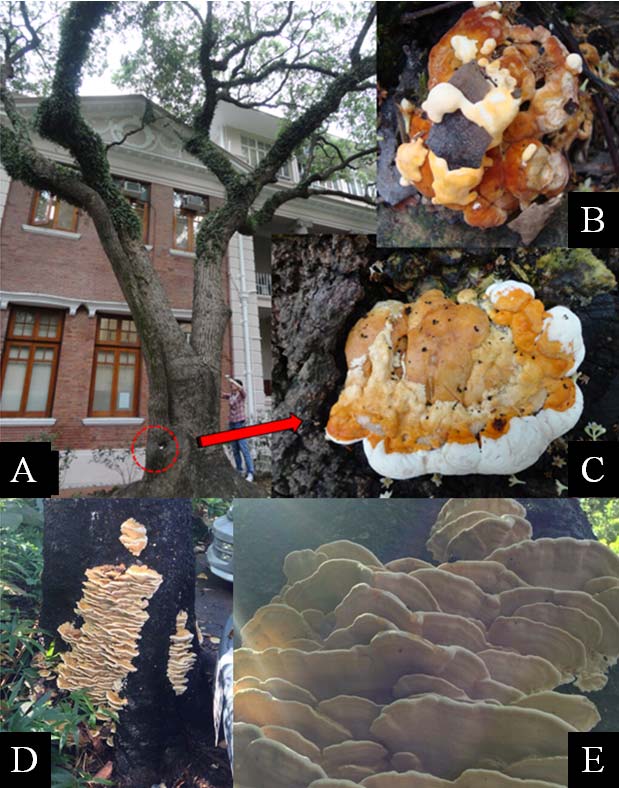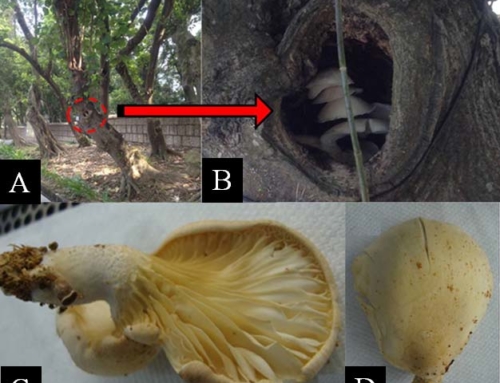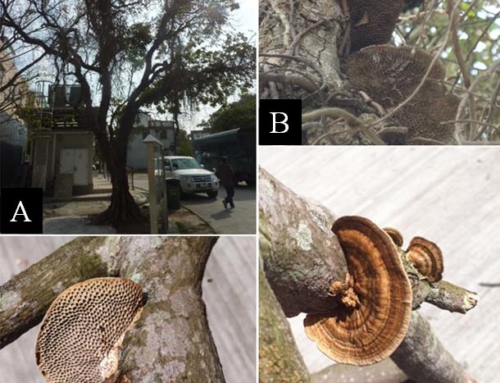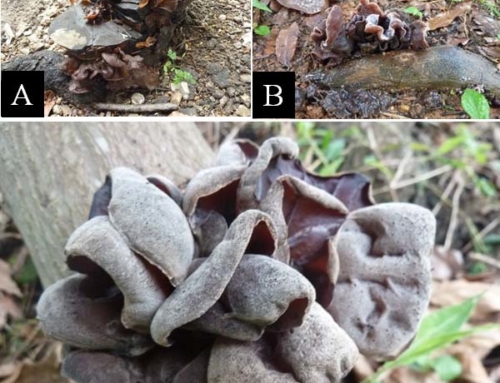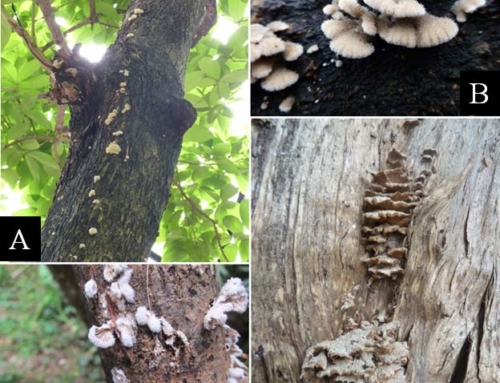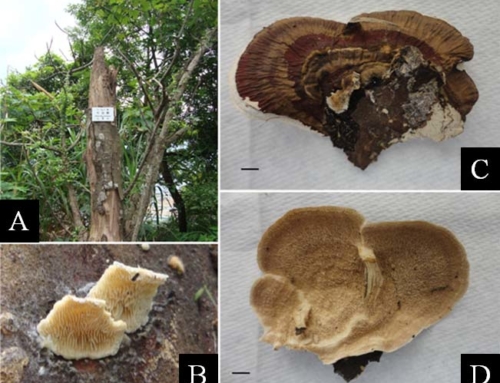Fruiting Body
Fruiting bodies up to 30 cm across, thick; pilei semi-circular, flat, hoof-shaped or irregular, woody yet pliable, upper surface cream-coloured, usually with green algal growth in older specimens; pore surface red-orange, fading to buff or dull pink with age, tube layers cinnamon brown in contrast to the paler flesh, pores 5-6 per mm; spores 5-7 μm, round, smooth-walled, hyaline.
Distribution and Host Range
This fungus is mainly found in the tropical and subtropical regions but has also been reported in the temperate region. Locally, it is found in broadleaved trees such as Celtis sinensis and Delonix regia.
Signs and Symptoms
This fungus is mainly associated with root collars and lower trunks of infected trees. Like most wood decay fungi, symptoms associated with inception decay at the early stage of fungal infection is not easily detected. As the decay advances during the late stage of infection, non-specific symptoms such as crown defoliation and internal decay may be experienced on the infected trees. Fruiting bodies of this fungus serve as readily observable signs which occur individually or in aggregated forms on trunks.
Pathology
This fungus is a pathogenic wood decay fungus with the ability to cause white rot decay on the root collars and lower trunks. Trees after years of infection by this fungus would start experiencing decline as the fungus could gradually disrupt the function of vascular system in the sapwood and degrade the heartwood.
Management and Control
Risk category: Moderate (ORANGE) Since this fungus would adversely affect tree health and structural stability, infected trees should be put under regular monitoring. Avoidance of tree injury from pruning and mechanical damages could substantially reduce the chance of infection by this fungus as the main route of infection is from basidiospores. Fruiting bodies should be removed to minimise the risk of building up of fungal inoculum and infecting adjacent trees. Fungicides may be used for trees exhibiting early or advanced stage of infection, though the treatment may not be effective to hamper the onset of the disease. At the advanced stage of infection in which the structural integrity of the trees are undermined and could not be mitigated through pruning/installation of props and wires, removal of structural limbs and/or whole tree should be considered.
Citation: Note on Common Wood Decay Fungi on Urban Trees of Hong Kong

